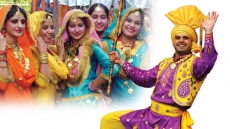Having recently increased in prominence, it is possibly one of the oldest diets in existence.
Diet is a difficult thing to perfect. Seemingly, every season or every year brings new popular diets, that are first replicated, then mimicked, and finally criticized for their lack of scientific reasoning. Several of them managed to survive the years. A diet that has just recently started increasing in prominence is the plant-based diet.
Plant-based diets are the opposite of ‘new’. In fact, they are possibly one of the oldest diets in existence. Several cultures around the world have adapted to plant-based diets over time, including many eastern countries such as India and China. On the other hand, in the western world, such ideas were met with ridicule and hostility. There was a negative connotation with plant-based diets, as being the ‘poor’ man’s diet and its followers sometimes faced social alienation, being called ‘overly sensitive’.
In fact, up until late 2010, plant-based diets were not regarded as a way to stay healthy. However recently, around late 2018, there has been a spike in the positive interest surrounding plant-based diet. According to Peter Joe, Chief Executive Officer at Sunrise Soya Foods, plant-based diets have gained mass appeal with meat-eaters mostly because of a “combination of consumers being more curious, health-conscious, and plant-based foods being more readily available” in grocery stores and restaurants. He also mentioned that plant-based diets seem to be more of a trend than a diet, explaining that “as more consumers are becoming aware of the health benefits associated with plant-based proteins like soy… [there is] a positive future for plant-based eating.”
So, what are plant-based diets? Firstly, let’s cover what they are not. Plant-based eating is not expensive, it does not mean bland meals, and most importantly, it does not mean becoming vegetarian. Plant-based eating allows for quantities of meat, fish, poultry or diary – something that many people might not realize. Additionally, plant-based diets can vary drastically from person to person.
The newly surfaced interest surrounding this type of eating can be attributed to many factors. Plant-based diets are now taken more seriously than they were in the past. The health pitfalls associated with meat products are completely eradicated. Additionally, several health benefits have been linked to plant-based diets, including a reduced risk of heart disease, certain cancers, obesity, diabetes and cognitive decline. Several athletes have even supported the diet, helping alleviate the misconception in sports nutrition, even today, that animal protein is required to perform at a high level.
Secondly, eating plant-based can also reduce your carbon footprint. It is quite apparent that a more plant-based diet would decrease the number of animals being killed, but the indirect benefits of this might not be as obvious. There is a reduction in greenhouse emissions, since some animals release methane gas which helps with greenhouse gases, and it also takes less energy to transport and preserve plants than meat. There is also a reduction in fossil fuel for the same reasons (less transport and preservation). Lastly, by choosing more plants over meat in diets, water use is decreased, since animals kept in captivity for processing would normally be taking more water.
For most people, switching over from a meat-heavy platter to a plant-based one can have an adjustment period. Plant-based diet can vary from person to person, but mostly they focus on minimized processed foods, limiting animal products, and increasing intake of plant sources foods such as vegetables, fruits, whole grains, legumes, seeds and nuts. This means a reduction in fast food, desserts, refined grains, packaged food, and processed meat. There are many tips and tricks to transitioning into this lifestyle. For instance, instead of eliminating certain foods, it might be more worthwhile to find the plant-based substitutes instead. If you must have take-out or fast food, choose the ‘veggie’ alternatives to many meat dishes. Another hack is tofu. According to Joe, tofu from soybeans, is not only “one of the best sources for plant-based protein as it contains all the essential amino acids [needed] for health,” but it is also “naturally low in saturated fats, [and] cholesterol.” All in all, for all these reasons, and many more, it might be worthwhile to switch to a more ethical, healthy way of eating.








